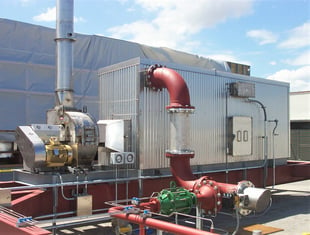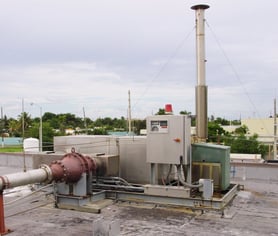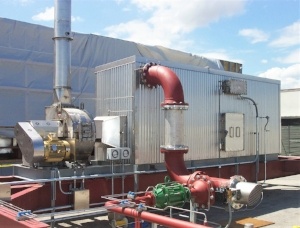Ethylene oxide (EtO) is a flammable, colorless gas used as an agent to sterilize equipment and plastic devices that cannot be sterilized by steam, such as healthcare devices and instruments. Ethylene oxide is also used to make other chemicals that produce many everyday products including plastics, textiles, adhesives, detergents and cosmetics.
UPDATE March 14, 2024. EPA announces final rule to slash toxic emissions of ethylene oxide and reduce cancer risk.
The U.S. Environmental Protection Agency announced a rule that will reduce lifetime cancer risks for people living near commercial sterilization facilities across the country. The final amendments to the air toxics standards for ethylene oxide commercial sterilization facilities put in place the strongest measures in U.S. history to reduce emissions of EtO, one of the most potent cancer-causing chemicals. Through the installation of proven and achievable air pollution controls, commercial sterilizers will reduce emissions by more than 90%. Learn more here.
Medical Equipment Sterilization
Bulk sterilization is the most common process, where products to be sterilized are placed in a sterilization vacuum chamber and are exposed to a sterilant gas such as EtO at a predetermined temperature, humidity level, and pressure. Following their removal from the sterilization chamber, the sterile products are place in an aeration room (to allow further diffusion of residual EtO) and kept there for several hours or days depending on the product.
Ethylene oxide (EtO) is an alkylating agent that disrupts the DNA of microorganisms, which prevents them from reproducing. The EtO penetrates the breathable packaging and sterilizes all accessible surfaces of the product to render products sterile by alkylation of proteins essential for cell reproduction.
Control Options
Catalytic oxidizers and scrubbers are the most widely accepted control technologies available to control VOC emissions from the EtO sterilization processes.
Oxidation
Catalytic Oxidization
Catalytic oxidation of volatile organic compounds (VOCs), including ethylene oxide, works by reacting the harmful air pollutants over a specially designed catalyst where VOCs are converted to CO2, water vapor (H2O), and usable heat. These harmless byproducts are passed through a heat exchanger where the gas stream energy is transferred to the incoming exhaust. Catalytic oxidation can provide a minimum +99% VOC destruction even at the lowest flow and solvent loadings. Because catalytic oxidation is applicable to the control of lower EO concentrations, facilities can manifold several EO emission sources to one control device. In some situations, low-concentration emission sources can provide part or all of the necessary diluent air.


Learn more about the recent installation of a Catalytic Oxidizer for Ethylene Oxide emissions by clicking here.
Regenerative Thermal Oxidation (RTO)
For larger air flows or concentrations, the use of a Regenerative Thermal Oxidizer (RTO) can also be considered. Thermal oxidation operates in a similar manner to catalytic, expect that instead of using an oxidation catalyst, a natural gas fired burner system is used to raise the temperature of the emissions to the set point necessary to destroy the pollutants.
Scrubbers
Scrubbers are aqueous systems used to absorb EtO vent gas and are also designed for very high efficiency of EtO removal. EtO is extremely water soluble, so vent gas is typically fed to a scrubber column filled with random packing and the EtO is absorbed by an aqueous stream running countercurrent to the vent gas to complete the hydrolysis of the EtO. Once the concentration of ethylene glycol reaches a predetermined weight percentage, the efficiency of the scrubber declines requiring process downtime as the scrubber liquid needs to be replaced and properly disposed of leading to additional ongoing operating costs.
Founded in 1969, Catalytic Products International (CPI) is a leader in enabling clean production through the implementation of air pollution control systems for VOC, HAP, and Odor related issues. CPI has extensive experience installing Catalytic Oxidizers (CatOx) at multiple U.S. and global ethylene oxide sterilization facilities for the abatement of ethylene oxide (EtO) emissions.








